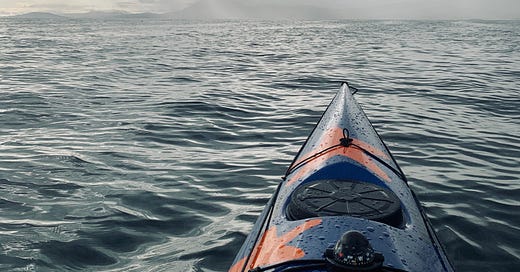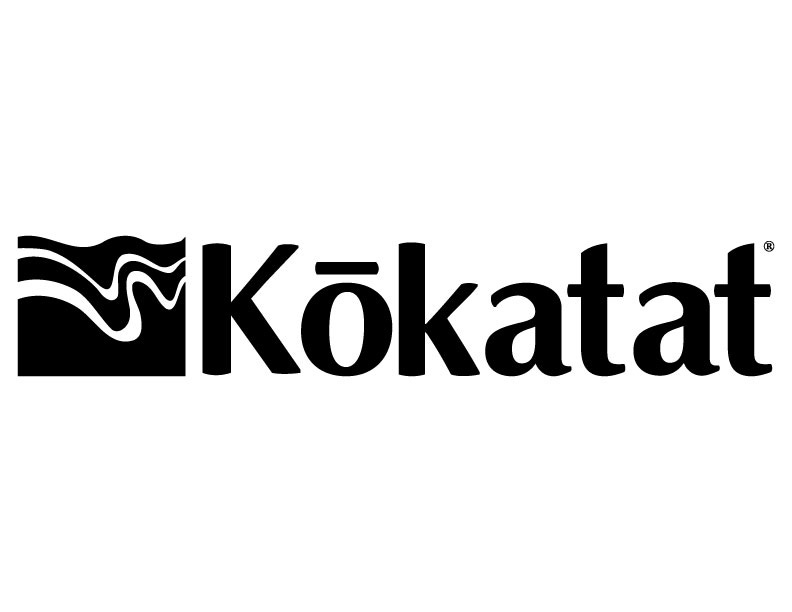I’m trying to go fast next year. By fast, I mean fast for me. Fast isn’t an average speed or total number of paddling days (that’s largely up to Poseidon). Fast is a way of approaching this challenge. It means taking the most direct, exposed routes and carrying everything I need for the trip. It’s what climbers call “alpine style.”
The training I’ve been documenting in these posts is all about developing the strength and endurance to go fast and keep going. But, if I was planning to take more time, I could get away with less training.
There are other ways to take this trip, and not all of them require hours of aerobic base-building or commitment to a fast & light ethos. It’s doable for any paddler with a decent level of experience and confidence on the water.
The average time to complete a lap around Ireland is about six weeks. That means teachers, students, and Europeans with six-week vacations all have time to do this trip without upending their lives. For Americans, a 90-day tourist visa gives you plenty of time.
But even if you don’t have six weeks, there are ways to break up the trip so it fits your schedule. It’s just a series of day paddles, after all.
Here are a few ways you can go about it.
The ultimate pub crawl
If you’re in no rush, just take the summer and explore the coast. Stop at towns along the Wild Atlantic Way and stay in B&Bs instead of bivouacking on windswept rocks. If the weather gets nasty, take up residence at a pub or cafe until conditions improve.
This strategy is accessible to relatively inexperienced kayakers. It’s also a good approach if you don’t have much time for training. By gradually increasing your daily mileage, it’s possible to ease into a trip without much prior conditioning (again, assuming your seamanship and boat-handling skills are on point). Ocean rowers call this “wait training”--you wait until you’re in the boat to start training.
Some of the best writing about the trip has come from paddlers who took this approach.
Just “keep Ireland on your right.”
In navigation terms, the island of Ireland is basically one big handrail. Beyond the awareness of tides and weather you need to keep you safe, if you “just keep Ireland on your right,” you’ll get all the way around eventually. No need to overthink it. Take it one day at a time and see how you do.
At no point on this trip are you far from civilization. In theory, your provisions could consist of a water bottle, some snacks, and a credit card (maybe cash on the islands)—sleeping in B&Bs and eating in pubs.
Supported
A supported trip would make your life a lot easier. Since your support crew would carry your food and gear, you could paddle an empty boat, which is faster (but less stable) and easier on your joints. You could bring way more gear and provisions and opt for all the amenities of car camping or #VanLife.
Riding a high
If you’re out to break a record, you could watch the Atlantic Surface Pressure Charts and go when a high-pressure system lingers over Ireland, putting as much distance behind you as you can while the sun shines. It’s impossible to get a weather window for the entire trip, but with luck and good timing, you could find yourself in favorable conditions on one side of the island while a gale is blowing on the other.
Stages
You could break the circumnavigation up into a bucket list of day paddles you tick off, in no particular order, over a few seasons or a lifetime.
When you have time
Kevin O’Sullivan is an Aer Lingus pilot who completed the trip on his days off over the course of three summers, stashing his boat with friends along the way.
Island hopping
One route that has been attempted but never completed, as far as I know, involves paddling from island to island without landing on the Irish Mainland. This would involve long, committed crossings and a high likelihood of getting windbound for days, Robinson Crusoe style, on a rock offshore.
All together, in one day
A friend of Ireland circumnavigator Timmy Flavin proposed a one-day circumnavigation of Ireland in his memory, dividing the route between 350 kayakers, each with a segment of coastline to paddle to complete the big circle. It’s a beautiful idea. I don’t think it’s been done yet.
Without fanfare…
Or, you could do it and not talk about it.
Thanks for reading,
-Charlie
Thank you to Mike Jones for coaching and guidance.
Kokatat is the official gear sponsor of The Lap.
The lap will be fueled by Resilient Nutrition’s Long Range Fuel and bars.
Expedition coffee by 3fe.
CH Marine will be providing a VHF radio and other safety equipment.
Tent and cooking gas provided by Paddle & Pitch. Trolley by KCS.









